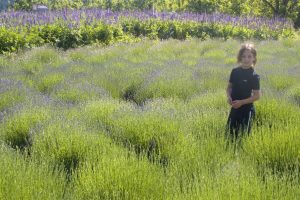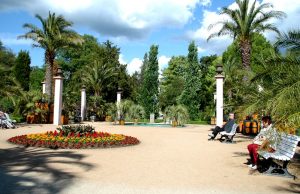Kevin Milakovic- Therapeutic Gardens
Kevin Milakovic



Preface: My name is Kevin Milakovic and my portfolio is on “Therapeutic Gardening”. The type of license that I will be using is CC BY 2.0
Introduction: In my portfolio, I will be investigating Therapeutic Gardening. I will be looking into their usefulness. In addition, I will be giving a brief history of Therapeutic Gardens, as well as, going over their current usage. I will be reviewing Dr. Benjamin Rush’s involvement and how hospitals have incorporated Therapeutic Gardens.
Theme: The themes of Therapeutic Gardens include peace, and tranquility, and a sense of healing. The gardens provide an escape. The theme of peace is seen while you sit and admire the garden. You can escape from your reality to a place of peace. You forget your troubles and just enjoy the space you are in. In essence, you find a place that is tranquil and calming to you. This can happen while you are just sitting watching the garden or while you are gardening. The gardens let your mind wander to a happy place or time, or it can give you a new focus. You can forget about your troubles while you are focusing on the garden whether it be by creating the garden or tending to it. The garden helps with your healing and It helps give you a sense of wellbeing. Nature has its own healing power. Just looking at the greenery gives a calming effect; it lifts your spirits. The second of the themes that I will describe is healing. This is based on the gardens being a form of therapy for people. They are seen in some hospitals but not all and they are thought to relieve stress. Interacting with nature has a therapeutic effect and aids in healing. Nursing homes are incorporating gardening in their activities to lift the spirits of the residence.
Analysis: What is therapeutic gardening? Therapeutic Gardening is the use of gardens to meet people’s needs and relieve them of things like stress, tension, and anxiety in addition, to lifting their spirits, increasing health, happiness, and quality of life. It is said to have begun in 2000 B.C in Mesopotamia. However, there is no easily accessible information on those gardens. The next example of therapeutic gardens does not appear until about 500 BC. At this time, it was run by the Persians. The Persians were said to have created gardens to please every sense. Examples of gardens like that can be seen in the photos above. It was not until the 19th century that the United States understood this type of garden. Dr. Benjamin Rush was the one who first used gardens as a way of treatment for his patients and reported it in his work. His work showed that gardening had benefits for people with mental illness. As a result, this type of garden was and still is used in hospitals around the world. It has been shown to help improve memory, task initiation, cognitive abilities, language skills, and socialization along with increasing health, improving mode, and quality of life. The gardens use various colors, textures, and plants to create beautiful spaces.
Application: Therapeutic gardens are very important. They provide a sanctuary for the mind and soul. While gardening you focus on the garden, the beauty of the plants, your surroundings, the greenery! You forget about your troubles and are transported to a time and place that is peaceful where you focus all your energy on the task at hand. You can be planting the garden, caring for the garden, or just enjoying the beauty of the garden. Therapeutic gardens use the healing powers of nature. They can even be used as a treatment in some hospitals.

